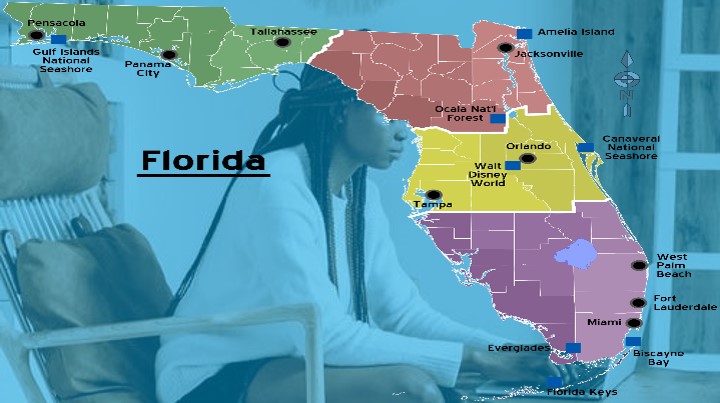Last Updated on April 22, 2023 by Uncle Pat Ugwu
Most teachers believe in the value students can gain from cooperation, but they rarely organize collaborative activities in their classrooms. Sometimes, students whose teachers grouped to benefit from collaborative learning strategies are seen on their computers rather than with one another.
Promoting genuine teamwork may be difficult to accomplish and it does not happen by accident. If we desire true collaboration, we must create it as part of our learning activity. In this post, I will share methods for collaborative learning strategies.
But before I begin, let me briefly talk about collaborative learning strategies.
Collaborative Learning Strategies
According to Wikipedia, Collaborative learning is a situation in which two or more people learn or attempt to learn something together. This educational approach offers students the opportunity to learn in groups by working together.
If you wonder why we talk about collaborative learning in the first place. Please check out our post on the benefits of collaborative learning.
Examples of Collaborative Learning
Below are some examples of collaborative learning techniques you can start applying today.
1. Jigsaw Technique
By educating others, the jigsaw strategy expands on one of the most effective ways to process and remember knowledge. To use the jigsaw approach, the teacher can ask each student to study only a portion of the topic and then teach it to the rest of the team. The group then collaborates to synthesize the material and communicate what they’ve learned.
The jigsaw approach works best in small groups (4 – 5 students) and with difficult topics. Separate the lesson or needed reading into 4 – 5 portions. Each student is in charge of investigating one section.
Students can come back to their group to share their lessons or use technological means. This is one of the advantages of the internet in education.
2. Think-Pair-Share
The think-pair-share strategy is a collaborative learning standard in the classroom that educators may simply replicate online. Students collaborate in pairs to study, review, or analyze a topic and then present their results to the class. This is also known as Write-Pair-Share.
You must off students in order to use the think-pair-share strategy (groups of 3 also work). At the end of class, the teacher asks a question; before the following session, the groups gather and discuss their solutions. The question should be left open-ended in order to stimulate intellectual conversation. Then, either during class or on a discussion board post, encourage students to contribute their responses.
Having students discuss their responses with another person before presenting them to the class improves the quality of the conversation. This is different from the traditional method where only a small number of students raise their hands to respond to questions.
3. Brainwriting
In class conversations, two things frequently happen: only the loudest, most confident students engage, and only the most apparent views are given. Classroom brainstorming activities may assist even the most silent pupils to come up with fresh ideas, questions, and thoughts. Brainwriting is a simple approach for motivating students to develop ideas prior to a conversation while also ensuring that everyone has an opportunity to participate thoughtfully.
Before the lesson, the teacher offers a discussion subject. Students generate ideas on their own time and then submit them anonymously. This is a beautiful form of collaborative learning strategy and also an awesome method for effective teaching.
Brainwriting provides a level playing field, allowing even the most nervous students to engage and perhaps revealing more imaginative and intriguing solutions than students would attempt to offer in class.
4. Daily Discussion Questions
Online discussion boards are one of the simplest methods to increase student involvement while also improving everyone’s learning experience. Post discussion questions on a daily or weekly basis to inspire discourse and encourage students to think about the course topics in fresh ways.
The secret to a lively and engaging online discussion is to ask meaningful, open-ended questions that encourage different views. Request that students study materials, express perspectives, and perhaps even spark some debate. Check out our blog on messaging apps for collaboration you can use for this.
5. Break-Out Group Discussions
Not everyone feels at ease speaking out in large gatherings, especially in classrooms with hundreds of participants. To ensure that everyone gets a chance to speak, divide your class into smaller break-out groups.
Divide students into smaller discussion groups of no more than 20 persons. A moderator should be assigned to each group to help guide the discussion and monitor the group for any conflicts or concerns that may occur. This might be anything from a teaching assistant to a student volunteer.
A large class might feel more manageable with small-group conversations. When students are struggling, they can seek assistance and aid and teach one another.
6. Peer Review
Reviewing each other’s work is an excellent collaborative learning strategy to ensure that each student receives individual input and attention, even in a big group.
To ensure a faultless peer review, pair students anonymously to assess one other’s work. Provide students with the resources they need to conduct a good review, such as sample reviews, evaluation rubrics, and instructions for providing constructive criticism.
Giving and getting detailed criticism from peers allows students to expand their topic knowledge and enhance their writing abilities. You may want to check my post on the benefits of hybrid learning.
Collaborative Learning through Social Media
Social media has traditionally been described as a vehicle for knowledge transmission among communities, students, and learners. University students have used this social media to promote the collaborative study and social engagement.
The use of social media and social media-based collaborative learning has positive perceived benefits and a positive attitude toward learning and achieving academic goals, group study and social media-based collaborative learning have perceived positive benefits on student performance and learning in social media-based groups. – Shuai Liu et al, 2022.
Collaborative Learning in the Classroom
Planning collaboration learning and adaptation may not be very easy as it seems, many things should be put under serious consideration. Classroom Teachers and educators should strategize on how to connect the classroom with an appropriate technological infrastructure that will provide the needed solution for students.
Internet accessibility and software subscriptions should be used to connect classrooms to enable students to engage and collaborate with their peers globally. Let’s connect the classroom.
Final Thoughts
The dramatic shift toward remote learning has not been easy, but collaborative learning strategies may help students feel active and interested even when they are seated in front of a computer screen.
Online collaborative learning does not happen by chance. To make participation easy and straightforward, proper planning and the correct tools are required. You can check out these basic educational technology tools.





![16 Best Online Colleges in Ohio [Complete List]](https://patugwu.com/wp-content/uploads/2022/08/Online-Colleges-Ohio.jpg)
